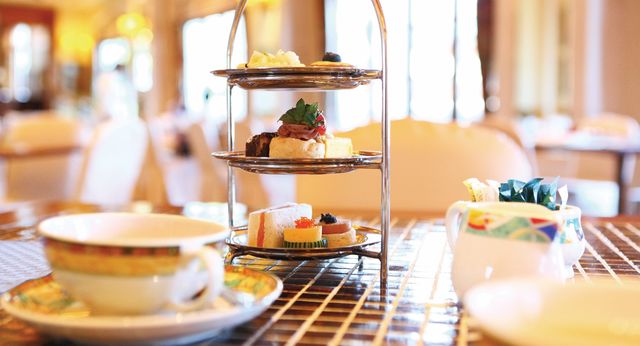
Although she hadn’t intended to do so, it was Anna Maria Russell who made afternoon tea a noble English ritual. The daughter of the third Earl of Harrington, she herself had achieved nobility in 1839 when her husband, Francis, became the seventh Duke of Bedford. Then, as a member of Queen Victoria’s court, Duchess Anna inadvertently established a tradition that still colors her memory. During a mid-1840s royal visit to Belvoir Castle, she complained of “having that sinking feeling” by late afternoon. The cause? Nothing more threatening than hunger pains.
That’s no wonder, of course, because two meals a day—breakfast and dinner—were still the norm then. And the duchess was finding it difficult to suppress the hunger that deepened during those long afternoons at court. As the evening meal was rarely served before eight o’clock, she requested, and received, a pot of tea and a bread treat every afternoon to tide her over. As it happened, this was rarely a solo repast.
At first, it was just close friends who crowded her chambers to enjoy refreshments, but that circle quickly expanded. And the concept itself caught on, as other ladies of the court began inviting people in for what, today, would be considered late-afternoon snacks. As was often the case, whatever the Royals did became widely imitated. So it was not long before afternoon tea was not just a ritual for the Royals to enjoy, but one to be shared among people of every class.
For some at the time, sipping a cup of tea was considered medicinal. Because it required boiling water, it was often thought to quash such waterborne diseases as cholera, dysentery and typhoid. But for most folks, then as now, pausing for a cuppa signaled a brief retreat from the demands of a long day.





Comments